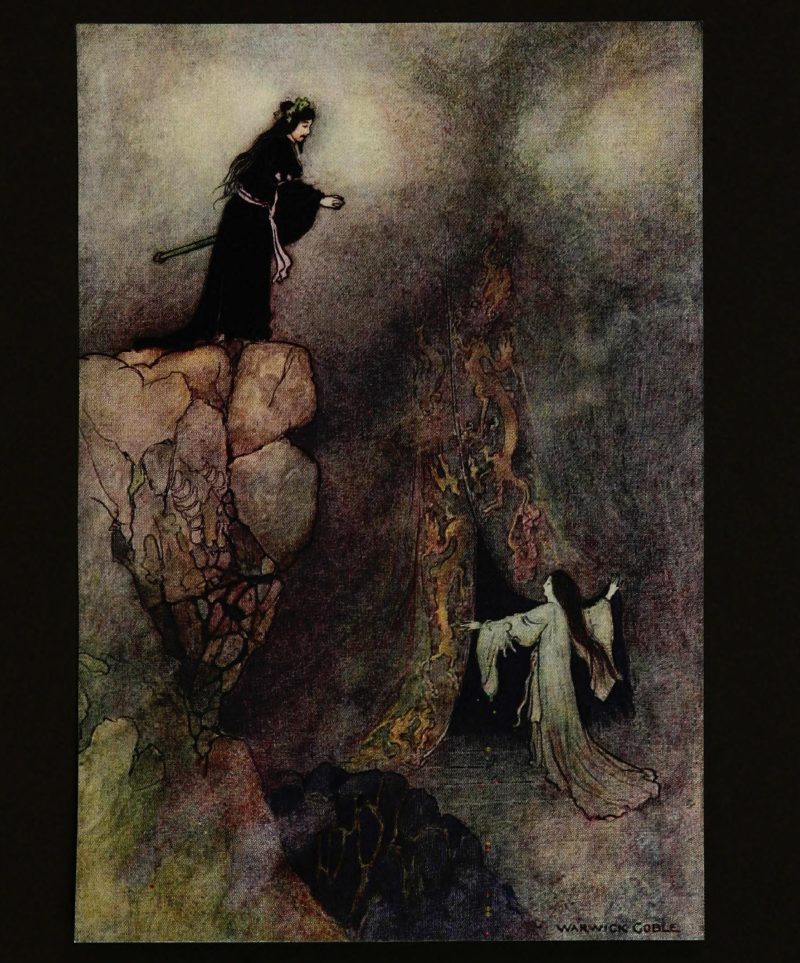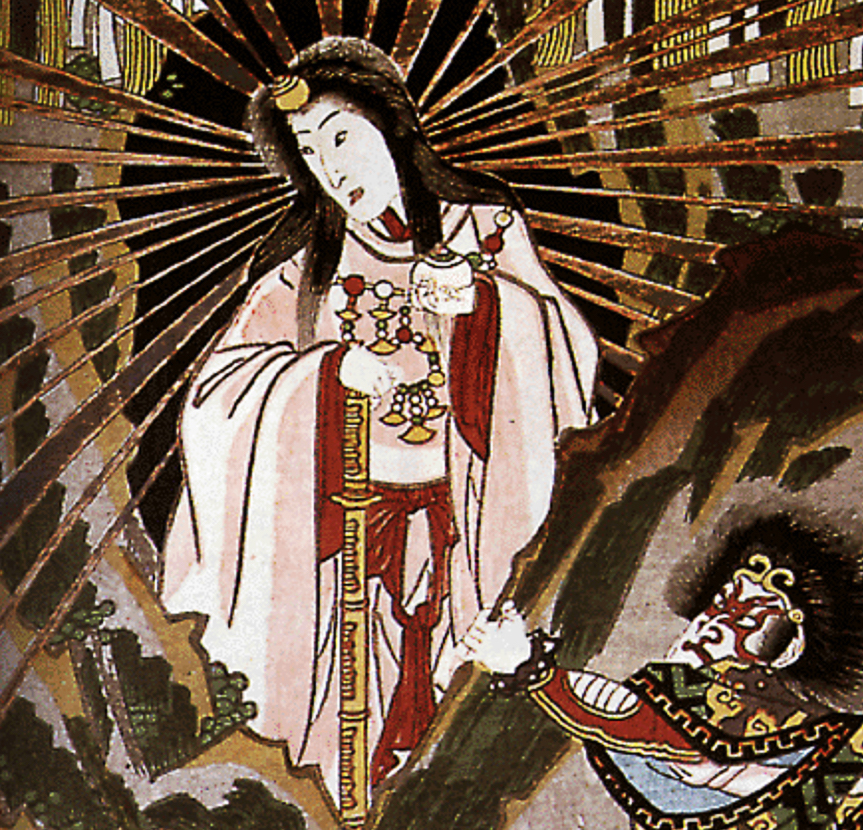Aug 31, 2021
In the Beginning, There Was a Spear… How Japan was Created
Here’s a question I bet you’ve never asked yourself: Where do countries come from? We tend to take the land upon which we live as a given; it’s just there, so we stand on it, build on it and sometimes even fight over it. If we do consider it, we probably have a faint idea of rising magma and perhaps Pangea, but that’s about it. Life, however, wasn’t always that simple, and for earlier civilizations, the hows and the whys were a huge issue, and as such, they often invented stories to fill in the blanks of knowledge.
It is unknown whether Japan’s story of creation comes from either a pre-literate Jōmon (c. 14,000 to 300 BCE) tradition, a Yayoi (300 BCE to 25 CE) tradition, or a combination of the two. Still, as far as creation stories go, as told in the 8th century CE Japanese anthology of mythology, the Kojiki, is quite a doozie.
In the beginning…
Back before the formation of the world, when ‘the land of reeds’ was young, floating in the universe like oil, the first kami [deities] came into existence at Takamagahara, the High Plain of Heaven. First came Amenominakanushi, ‘Lord of the August Center of Heaven’; Takamimusubi, ‘The High Creator’; and Kamimusubi; and these were then followed by seven further generations of gods, the last of which was Izanagi [he who invites] and his sister Izanami [she who invites].
Though the kami were in hiding in Takamagahara, the elder generations instructed Izanagi and Izanami to reveal themselves and bring structure to the disorder of the floating world. To do so, they bestowed upon the pair Ama no Nuboko a jewel-encrusted spear.

Gazing down at the swirling chaos below from high atop the Heavenly Floating Bridge, Izanagi and Izanami stirred the formless matter with its tip despite not knowing how the spear worked. As he lifted the spear, a drop fell from it, forming the island of Onogoro, and they built upon it their new home, the Eight Measure Palace, at the center of which stood the Heavenly August Pillar.
Birth and disappointment
With a home built, and a large pillar erect (ahem) between them, Izanagi and Izanami decided that the time had come to begin a family. Circling the Heavenly Pillar – Inzanagi going left while Inzanami – when they met in the middle, Inzanami in her joy called out “Ana ni yashi, e wotoko wo! What a wonderful man!”, initiating the consummation. Inzanagi, also delighted, replied, “Ana ni yashi, e woto-me wo!” What a wonderful woman! Unsure of how to proceed, and with Izanagi harboring a feeling that something was not right, the lovers took instruction from a pair of wagtails, and the communion began.
Soon, Inzanami gave birth to a son, Hiruko, but he was a ‘leech child,’ born limbless, and the disconsolate pair placed him on a boat of reeds and allowed him to float away, abandoned to fend for himself or die. Unperturbed, Izanagi and Izanami tried once again, but with similarly disappointing results.
The new lands
At a loss of what to do, the pair returned to the High Plain of Heaven to ask the advice of the elder kami, who instructed him that their offspring had been deformed because – as Izanagi had instinctively felt – of the unnatural way in which they had been conceived: the female Izanami had initiated the contact. Now understanding the error of their ways, brother and sister returned to their pillar, where Izanagi greeted his wife first.
Not long after, Izanami gave birth to the islands of Awaji, Shikoku, Oki, Kyushu, and Tsushima, before finally birthing the largest of them all, Honshu. Collectively the pair named the islands they had conceived Oyashimakumi, the Land of Eight Great Islands.
Joy and sorrow
With the land established, Izanami turned to other forms, giving birth to the kami of the seas, the wind, trees and mountains, and other natural expressions. However, as she gave birth to Kagutsuchi, the kami of fire, despite her husband’s desperate attempts to save her, tragically she was burned to death, in doing so giving birth to the kami of death and sorrow.
Distraught at the passing of his wife, spawned by his tears, a rage swept through Izanagi, and he attacked Kagutsuchi, decapitating the kami, and as his sword dripped with blood, yet more gods were brought into existence.
The underworld
After a long grieving period, Izanagi, set off on the long and hazardous journey to Yomi, the land of the dead, determined to bring Izanami back. Soon, he came across a large mansion guarded by terrifying demons, but after sneaking in through a back entrance, he found his beloved and beseeched her to return with him.
She could not, she told him, for she had eaten whilst in Yomi, yet Inzanagi begged her to try, and she agreed to ask the resident kami if she would be allowed to return. Yet, this agreement came under the condition that Inzanagi would not enter the mansion himself. However, after a day of waiting, guided by the light of a torch made from a tooth of his comb, he broke his promise. He went in looking for her, eventually coming to his wife’s rotten, decaying corpse, lying amongst recently-born thunder gods.

Disgusted, Izanagi fled, chased by the reanimated corpse of his once beloved, the thunder kami, deathly warriors, and Yomotsu-shikome (“horrible women from the world of darkness”). Fighting back his pursuers and making his escape, Izanagi rolled a huge rock into the House of the Dead entrance, imprisoning Izanami within, leading her to become known as Yomotsu-o-kami, Goddess of the Dead.
Interpreting the story
Of course, this is a mythological story, but like all such tales, it tells us a lot about the society which invented it.
If you want to read more on this tale and what the symbolism behind it means, check out this fascinating article, though be warned, it uses some NSFW words in there.
japanthis.com/2020/06/22/the-japanese-creation-myth-explained/
Image via wikicommons – Public Domain
Image via flickr.com – no known copyright
Image via wikicommons – Public Domain – modified


About the author